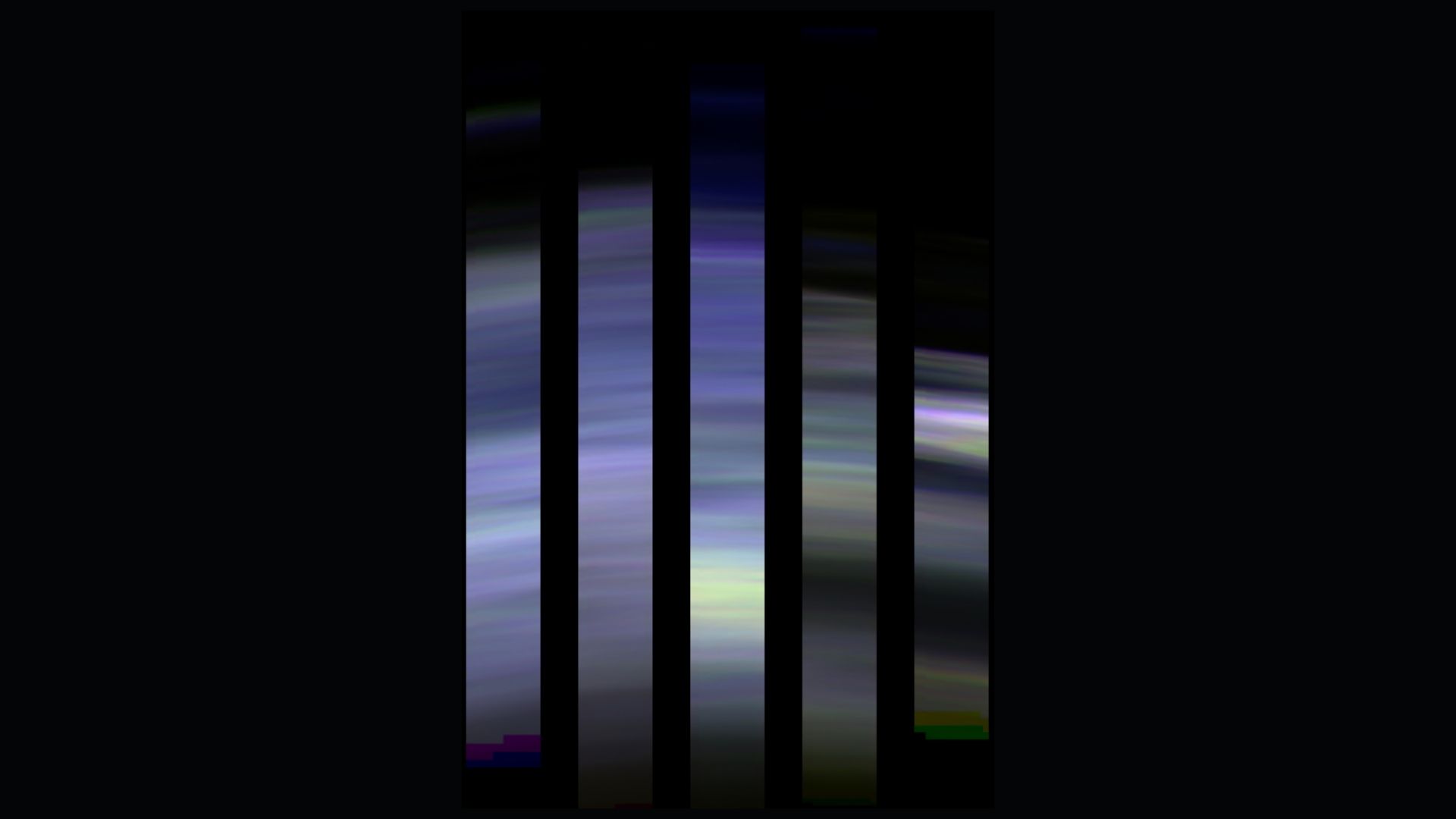NASA’s Perseverance Mars rover continues to beam home incredible sights from the Red Planet surface.
This week, NASA’s Jet Propulsion Laboratory (JPL) released an enhanced-color mosaic of 96 separate images taken by Perseverance on May 26, 2025 that together create an 360-degree panorama of a location on Mars called “Falbreen.” This area contains some of the oldest terrain Perseverance has ever explored on the Red Planet, according to JPL.
The image was taken on a day when the skies above NASA’s Perseverance rover were clear, enabling the robotic explore to capture “one of the sharpest panoramas of its mission so far,” according to a JPL statement.
The panorama was taken with Perseverance’s Mastcam-Z instrument and depicts a rippling surface nearby as well as hills in the distance some 40 miles (65 kilometers) away from the rover. One of the most striking elements of the image is the blue skies overhead — but don’t be fooled. The Mars’ skies never appear blue like Earth’s, and only appear to be blue in the panorama due to processing.
“The relatively dust-free skies provide a clear view of the surrounding terrain,” Jim Bell, Mastcam-Z’s principal investigator at Arizona State University, said in JPL’s statement. “And in this particular mosaic, we have enhanced the color contrast, which accentuates the differences in the terrain and sky.”
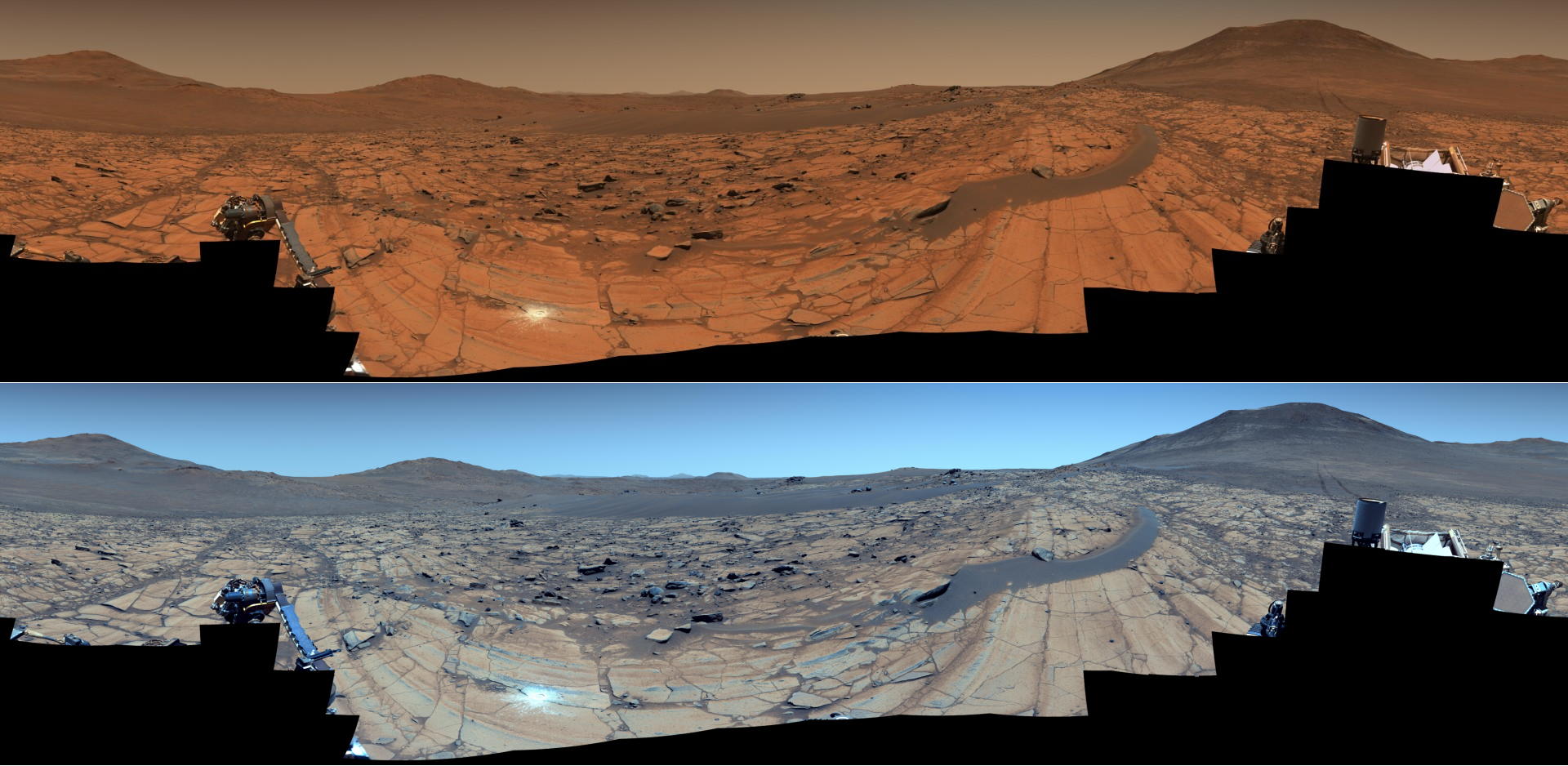
Aside from the blue sky, there is another element in this image that Perseverance’s science team is excited about. A large rock visible to the right of the center of the mosaic is an example of what geologists refer to as a “float rock,” in reference to a rock that was transported to its current location by water, wind, or even a landslide.
This particular float rock sits atop a crescent-shaped ripple of sand, but the Perseverance science team “suspects it got here before the sand ripple formed,” according to the statement.
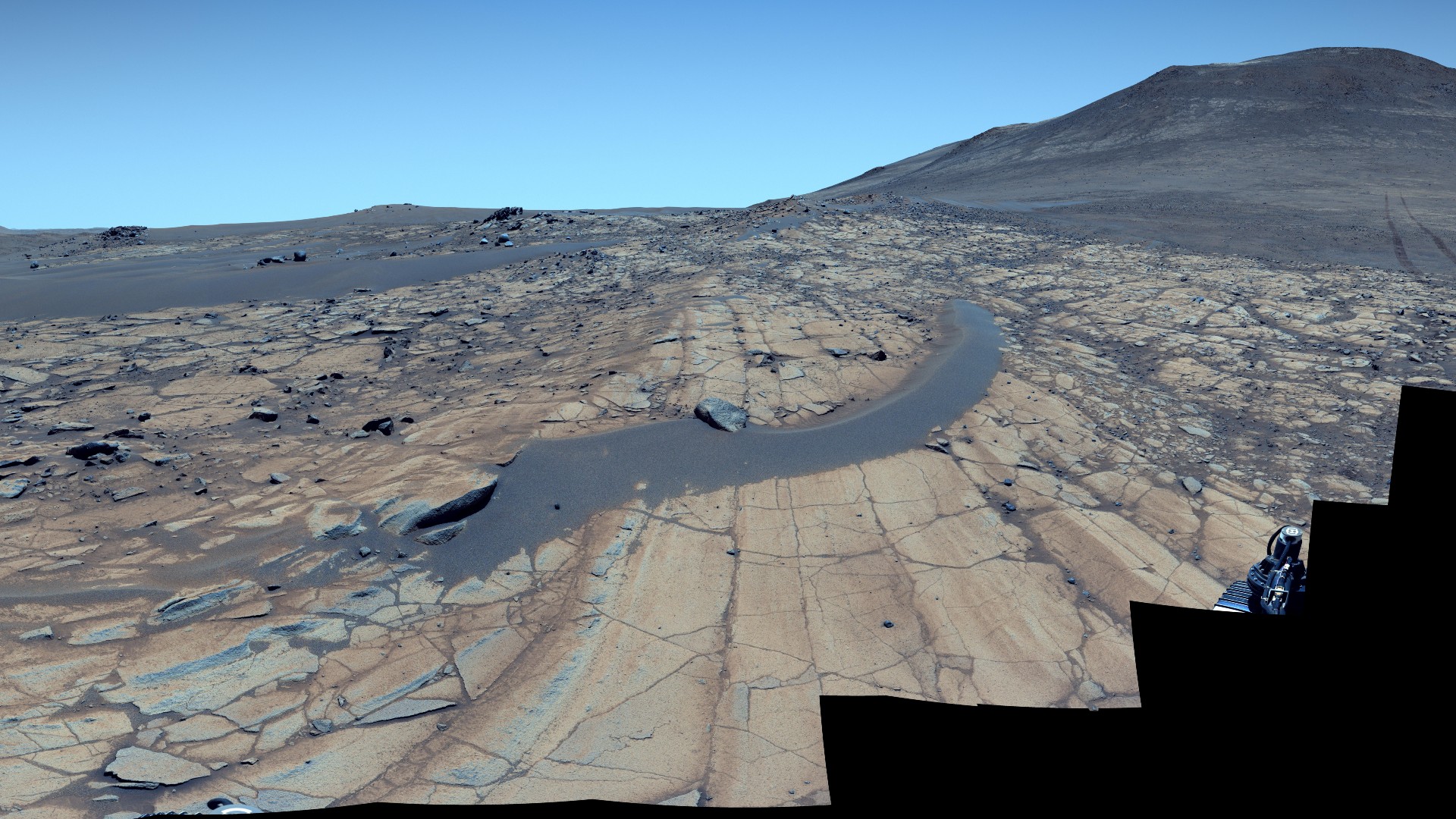
Also visible in the image is an abrasion patch, a 2-inch (5-centimeter) area of the Martian surface into which Perseverance drilled with its diamond-dust tipped grinder known as the Rock Abrasion Tool (RAT), capable of spinning at 3,000 revolutions per minute.
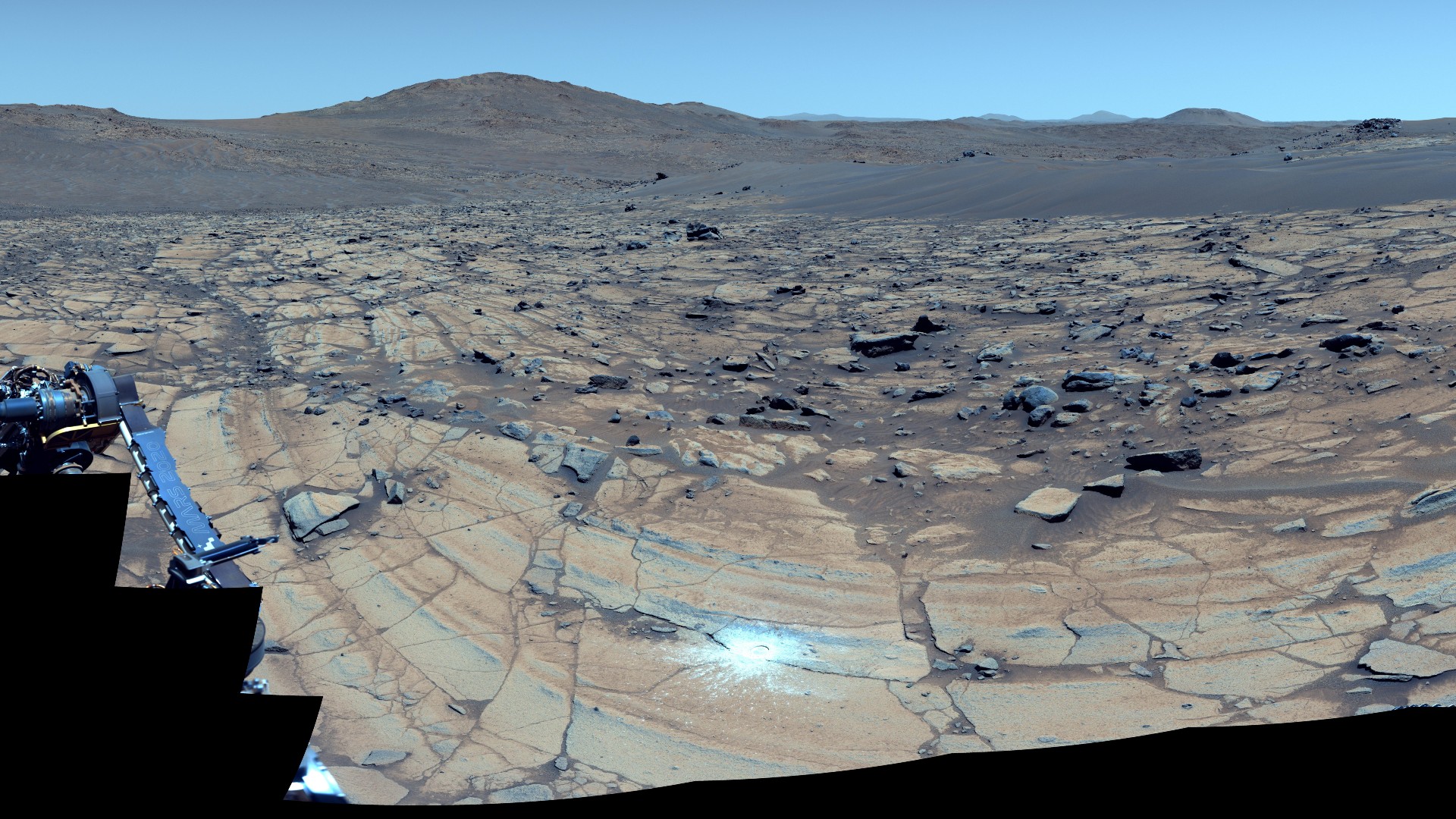
A raw, more close-up image taken by Perseverance’s Mastcam-Z instrument on the same day shows the abraded patch of the Martian surface in greater detail, revealing multiple cracks in the Red Planet’s weathered surface.
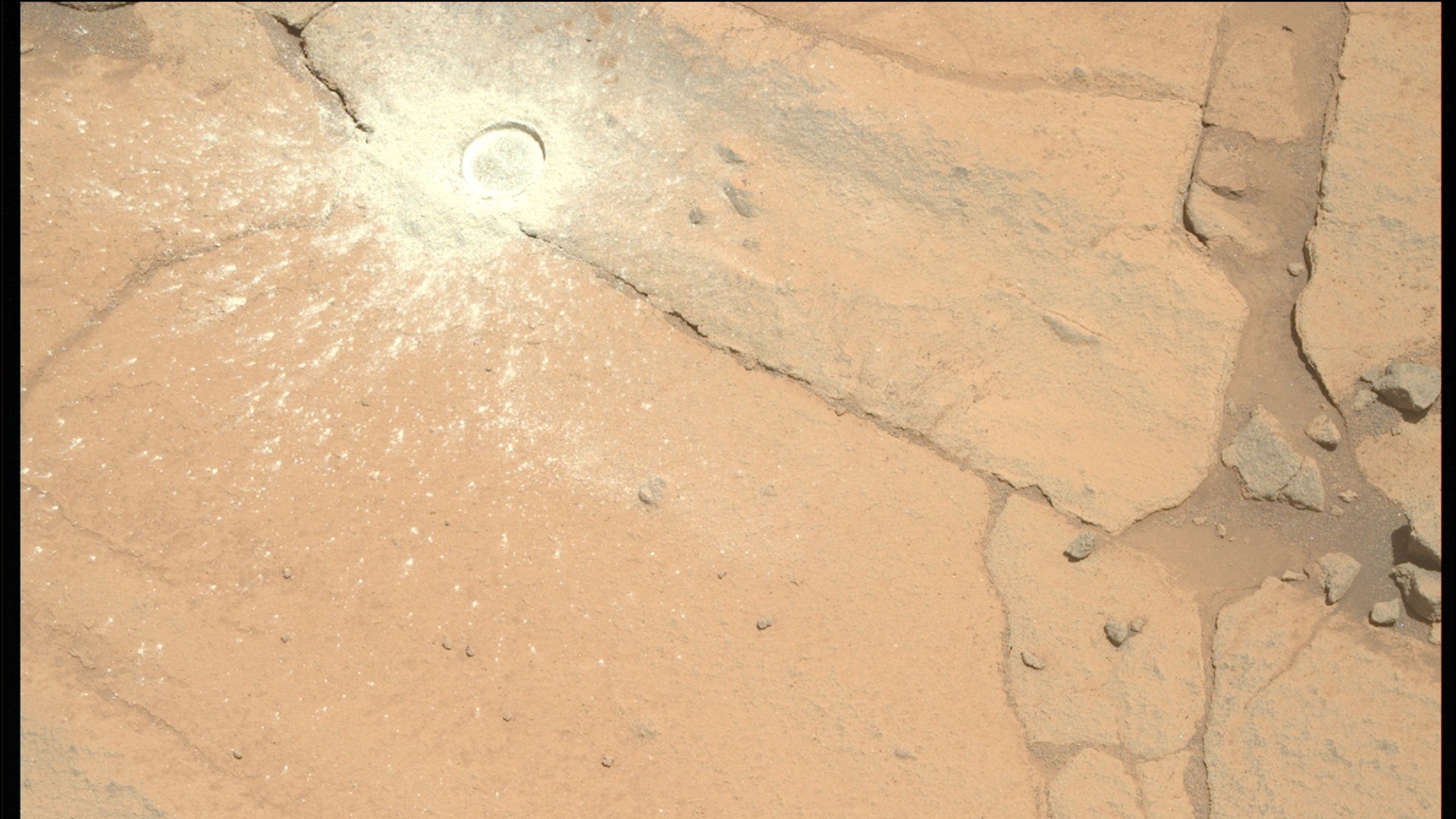
Perseverance landed on Mars on Feb. 18, 2021 in a multi-stage sequence that included an atmospheric entry capsule. The capsule had opened to deploy a landing vehicle featuring a “sky crane” that lowered the rover safely to the Martian surface before flying away and crashing at a safe distance to avoid damaging the rover.
The roughly car-sized 2,260-lb (1,025-kilogram) Perseverance landed in a region of Mars known as Jezero Crater. Since then, it has been scouring the area for interesting geological features and collecting samples that NASA hopes to one day return to Earth.
However, the fate of that Mars Sample Return program hangs in the balance due to widespread budget cuts at NASA. Private companies have offered to step in, but whether or not we will ever see Perseverance’s samples brought home remains unknown.
Source link
